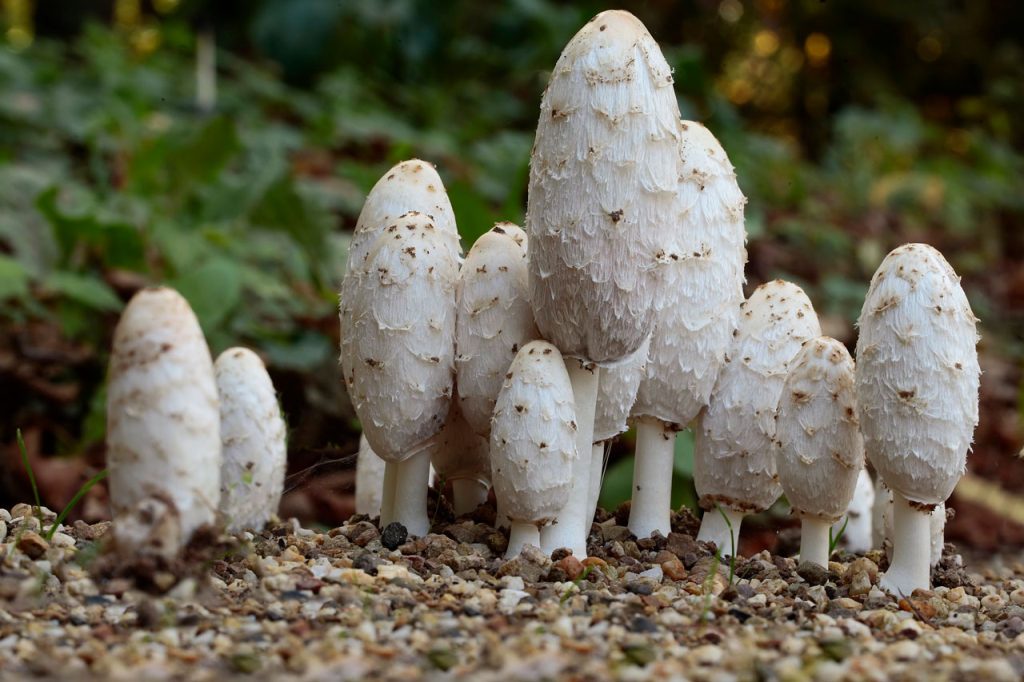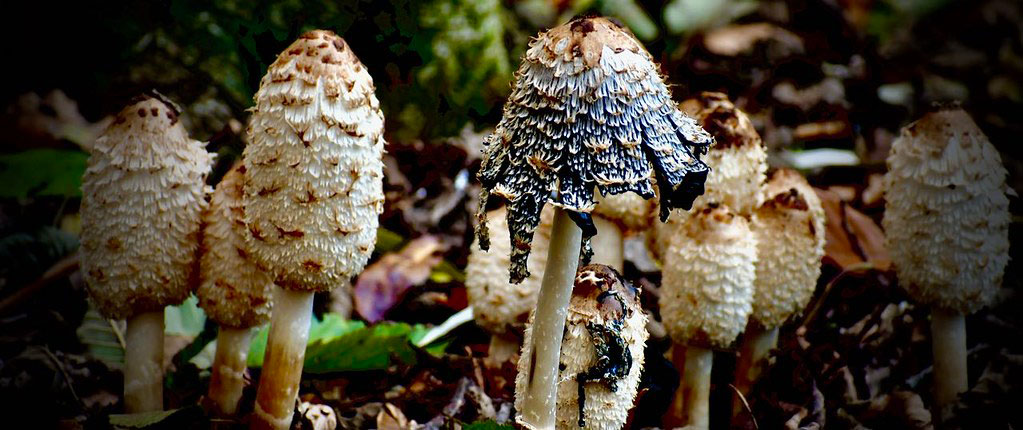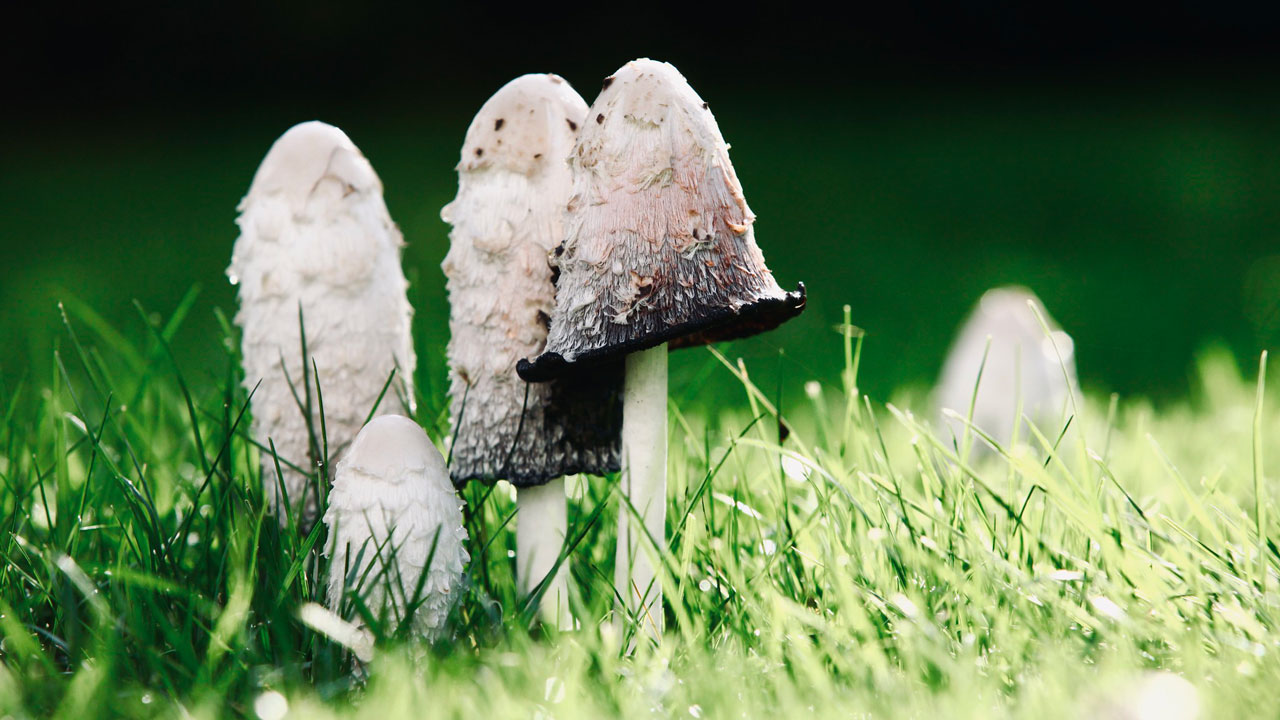Coprinus comatus: ink or bearded mushroom
2 years ago · Updated 6 months ago

The mushroom Coprinus comatus is one of the easiest edible mushrooms to identify, but also one of the most delicate when it comes to picking mushrooms
The Coprinus comatus mushroom
It begins to decompose a few hours after harvesting. Like most edible mushrooms, Coprinus comatus has many other common names, which generally refer in some way to its appearance.
Among the most common names are: chipiron des montagnes, apagacandelas, apagavelas, barbuda, champignon à l'encre, sombrerillo, tinturuela, urbeltz galpardun, gorritzaile, bolet de tinta, among many other names that are generally given to one of the most famous edible mushrooms that exist.

It is fairly easy to recognize, as it has a distinctive feature. It is a mushroom with a high water content, which quickly results in sudden growth and very little consistency. It sprouts explosively and, under optimal conditions, takes only a day to reach its final size.
The problem for mushroom pickers is that this process also occurs in reverse, i.e., it quickly begins to lose its consistency as it decomposes, eventually turning into a black liquid.
The medicinal effect of Coprinus comatus
An interesting fact is that Coprinus comatus, has medicinal properties. An example of this are extracts from Coprinus comatus that contain certain anti-tumor compounds effective against breast cancer, thus helping to prevent the growth of cancer cells and the formation of new tumor colonies.

Coprinus comatus, also known as the Nazi mushroom, is one of the most delicate mushrooms
The barbuda or ink cap mushroom is one of those mycological species that most mushroom pickers reject or despise. Big mistake! It is one of the edible mushrooms that performs best in the kitchen. It is also one of the mushrooms that appears earliest after a rainy spell. Therefore, it is also a species that can brighten up our basket if we have gone to the mountains before the rest of the species appear.
What are the characteristics of the ink cap mushroom or Coprinus comatus?
Not only is it a delicious mushroom, but it also has a very distinctive shape. Once we have recognized a barbuda or bolet de tinta, as Coprinus comatus is known, we will have no hesitation when we come across other specimens.
Without a doubt, the most visible characteristic is its ability to liquefy into black ink. The distinctive bell shape of its cap quickly turns into a dark, almost black liquid, which, if we are not familiar with it, can cause damage to our car, shopping basket, or kitchen.
What do Coprinus comatus look like?
The color of its cap is white, with brown scales that give it one of its popular names, “Seta barbuda” (bearded mushroom). Its cap begins to open at the bottom and liquefy, and within a few hours it disappears completely.
The stem of Coprinus comatus is long and thin. It is hollow in the center and separates very easily from the cap.
The gills of Coprinus comatus are white when young, then turn pinkish and eventually dark, almost black.
The flesh of Coprinus comatus, or “Seta de tinta,” has a very pleasant taste and a delicate texture. For some enthusiasts, it is one of the best mushrooms, as is its aroma. As with the rest of this mycological species, in its adult stage, the flesh turns dark before beginning to decompose into a black liquid resembling ink.
Photographs of Coprinus comatus, the “Seta barbuda”
This curious mushroom is very photogenic, and you have probably had the opportunity to take pictures of it in the woods. They are magnificent! We leave you with our favorites
Where and when can we find ink mushrooms?
Coprinus comatus, also commonly known as chipiron des montagnes, is usually found mainly in well-fertilized areas, which is why it appears in fields, meadows, and along paths, where agricultural and livestock activities deposit large amounts of nutrients in the soil, nutrients that this mushroom feeds on to grow quickly.
An interesting tip when harvesting mushrooms such as chipirón de monte is that, as it needs a lot of moisture, it will be easier to find in damp, shady places, and you will probably not have to search for long.
We have already mentioned that it appears abundantly after heavy rainfall, both in autumn and spring. Thus, we can find shaggy mane mushrooms or bearded mushrooms in meadows and on the edges of roads and paths. It also likes parks with lawns and areas with disturbed peat bogs. This is where we can find numerous circles of several specimens. Sometimes even dozens.
Coprinus mushrooms emerge gradually, so if we find a good mushroom patch, we can return a few days later and we will surely find a good number of them that we didn't notice before.

Confusion between Coprinus comatus and other mushrooms
Given its distinctive shape, the only potentially dangerous confusion is with another species of Coprinus, Coprinus atramentarius. This is a brown Coprinus, smaller in size and without obvious folds on the cap. It is not a poisonous mushroom unless we ingest alcohol, even after 2 or 3 days. It then causes an allergic reaction that produces gastrointestinal disorders, skin redness, and fever. Because of this reaction, it has been prescribed to patients suffering from alcoholism.
Are you interested in the benefits of medicinal mushrooms? We recommend these articles
The ink cap mushroom and its medicinal properties
This is a very fragile mushroom found almost everywhere, which usually grows in clusters in meadows and wasteland. It is characterized by a thin, long stem that can reach 20 centimeters in height and an elongated bell-shaped cap (hence its name “matacandil”), covered with numerous fine white scales (hence the name “barbuda”).
It is edible and highly prized. It must be harvested very early because 2 or 3 days after sprouting, it self-digests (a phenomenon known as deliquescence), turning into a black ink (formerly used for writing).
Nutritionally, apart from its protein content, it is notable for its relative abundance of B vitamins and vitamins C, D, and E. It is also rich in minerals, particularly vanadium, iron, copper, and zinc.
This text is for informational purposes only and should not be considered a substitute for professional medical advice. Before making any changes to your diet or lifestyle, it is recommended that you consult a qualified healthcare professional. Similarly, it is important to note that research on the potential benefits of medicinal mushrooms is limited and further research is ongoing to fully understand their effects on the human body.
Would you like to buy coprinus?
In our Micosalud section, you can buy organic Coprinus comatus powder, from organic cultivation, and other products made with C. comatus at the best price. Take advantage of the excellent properties of Coprinus comatus.
Main benefits of consuming Coprinus comatus
The most important is its high vanadium content, which forms bioavailable organic complexes that are the basis of its antidiabetic action.
Organic vanadium complexes act on two levels:
- In the pancreas, protecting and revitalizing beta cells (insulin-producing cells). DIABETES I (DMID)
- At the general cellular level, improving cell membrane receptors, resulting in a decrease in insulin resistance. DIABETES II (DNID)
It should be noted that the use of vanadium salts for the treatment of diabetes has many side effects and is not a highly recommended medical practice. However, the administration of vanadium through this mushroom has no side effects and does not require iron supplementation, as Coprinus is also rich in iron.
Coprinus is one of the mushrooms with the highest beta-glucan content.

Therapeutic action of Coprinus comatus according to MTCH
Stimulates the stomach and spleen-pancreas. Used to improve the digestive process in cases of heavy or slow digestion. Also improves appetite in cases of senility or mental anorexia. Recommended for combating hemorrhoids.
Therapeutic properties of Coprinus comatus
Hypoglycemic. Ninety minutes after ingesting Coprinus powder, blood sugar levels are reduced by 41%, and its effect lasts for six hours with a 20% reduction in blood sugar levels. Blood sugar levels should be monitored in the same way as when administering insulin to avoid hypoglycemia.
Metabolic syndrome. The mushroom has also demonstrated a hypoglycemic effect at the general cellular level, reducing insulin resistance.
Anti-atherosclerosis and anti-arteriosclerosis. Ingestion of this mushroom has shown an improvement in blood circulation, with a reduction in atheromatous plaques (anti-atherosclerosis) and an improvement in the elasticity of the arterial walls (anti-arteriosclerosis).
Antitumor. Coprinus extracts contain antitumor compounds that are effective against breast cancer (non-estrogenic) and manifest themselves in three ways: 1. By inhibiting the growth of cancer cells – 2. By inducing apoptosis of these cells – 3. By inhibiting the formation of new tumor colonies (in vitro).
In addition, the protein y3, which inhibits stomach cancer tumor cells, has been identified in its extract. Anti-obesity. Mice fed dehydrated Coprinus powder in addition to their usual diet had reduced plasma sugar concentrations, which was accompanied by a halt in weight gain. This was interpreted as a metabolic effect on weight gain that accompanies the hypoglycemic effect.
Antioxidant. The mushroom contains ergothioneine, a powerful antioxidant with 12 times the antioxidant power of wheat germ.
Coprin is recommended in cases of:
- Type I diabetes (IDDM)
- Type II diabetes (NIDDM)
- Metabolic syndrome
- Obesity
- Cardiovascular disease Atherosclerosis
- Arteriosclerosis
- Constipation
- Adjuvant in cancer treatments:
- Gastric
- Breast (non-hormone-dependent)

Coprinus comatus in the kitchen
The bearded mushroom, or ink cap, behaves in the same way as other mushrooms in cooking, so any dish we make with other mushrooms can also be made with ink mushrooms. They are delicious in salads, sautéed with a little parsley and garlic, in carpaccio, and even raw.
Spaghetti with Coprinus comatus sautéed with garlic, chili pepper, and ham is a delight and super easy to cook. Even a Coprinus risotto will surprise you with its delicate flavor.
The only precaution we need to take with these mushrooms is to only cook young specimens that have not started to release ink. Otherwise, the result will be a blackened dish.
Only eat young Coprinus comatus mushrooms. Avoid the ink
One tip to slow down this liquefaction process is to separate the stems from the caps of Coprinus comatus as soon as you pick them. It's not a miracle cure, but it slows down the process a little and gives you more time to eat them. However, this time frame is still shorter than with other edible mushrooms.
Finally, as a general recommendation, we should never consume specimens that we have picked on roadsides or in parks and gardens. Mushrooms absorb toxic metals and toxins that they find in the soil, which are more abundant in these places than in other habitats.
Now you know the characteristics of this mushroom. As we can see, it has a wide range of uses and properties. Whether we use it for culinary or medicinal purposes, we are sure to enjoy this mushroom. All you have to do is head out into the woods well equipped and send us photos of your finds and recipes. We'd love to see them!
This text is for informational purposes only and should not be considered a substitute for professional medical advice. Before making any changes to your diet or lifestyle, it is recommended that you consult a qualified healthcare professional. Similarly, it is important to note that research on the potential benefits of medicinal mushrooms is limited, and further research is still ongoing to fully understand their effects on the human body.
Health, ink, and mushrooms!

Te pueden interesar